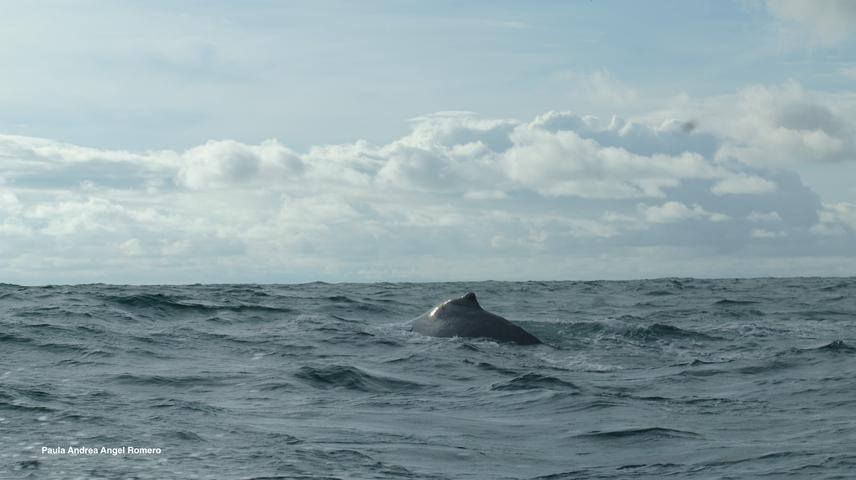Gabrielle Alexandra Rubiano Pinzón
We want to generate information and management tools suitable for whale-watching activities from a socio-ecological perspective, and establish whales health based on contaminants concentration levels.

The population of humpback whales has been the target of whale-watching activities during their migration route to the Colombian Pacific. Although various studies have shown the impact of tourism industry on cetaceans’ populations, these negative effects have not been evaluated yet. Particularly in the Colombian Pacific, studies about this subject have been conducted on an ecological perspective, but not on a social perspective. Furthermore, there is not any study that evaluate pollution levels related to anthropogenic activities.
The aim of this research is to analyse the socio-ecological system of whales watching in Bahía Malaga. through the variables presented by Eleonor Ostrom (2009). These socio-ecological systems analyses categories are: Resource units, resource system, governance system and users; thereby, it is going to be evaluated the interactions among them. Some of the variables that are going to be explored are: social network, history of use, importance of resource, spatial and temporal distribution of whales, information sharing and conflicts among users, and whale behavior. This research will be conducted in Bahía Málaga, which is located on the Pacific Coast of Colombia. Its economy is based mainly on tourism, followed by fishing and shellfish harvesting, shellfish for subsistence and-trade, the use of woods, hunting and subsistence agriculture. To accomplish the aims, it will be used social methods such as: interviews, surveys and workshops, to local actors for example: tour operators, hotel staff, key stakeholders of the CVC, PNN, among others.
Therefore, the investigation will generate information and management tools suitable for whale-watching activities from a socio-ecological perspective, and establish whales’ health based on contaminants concentration levels. The expected results are to identify and understand the dynamics between the stakeholders that define the whale watching activity, considering the social, ecological and biological factors.